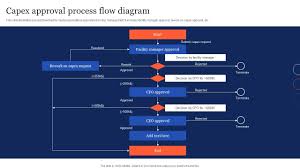Football Conditioning Workouts That Build Strength and Speed

Developing a Powerful Foundation for Football Performance
Football demands an intense blend of strength, speed, and explosive movement, and the right conditioning workouts can transform an average athlete into an elite performer. In the first stages of building a strong foundation, players focus on increasing core stability, lower-body strength, and neuromuscular coordination. These fundamentals elevate overall athletic performance while lowering the risk of injury. Early conditioning emphasizes functional strength, balance, and mobility to prepare athletes for more advanced training. When executed consistently, these workouts lay the groundwork for explosive movements, acceleration, and physical resilience that professional football requires. This initial phase serves not only as preparation for game-day intensity but also as a sustainable way to enhance long-term durability, and it supports adaptive recovery between sessions. Many players also incorporate sports analysis and tactical drills during these sessions to improve mind-body coordination. This foundational approach strengthens the athlete from the ground up and helps every movement become more controlled and efficient. Achieving this solid physical base ensures safe progression toward high-intensity training demands, and athletes benefit from improved technique and superior body alignment. F168 is used here only once as instructed.
Key Foundation Training Elements
- Core activation drills
- Glute engagement exercises
- Light plyometric movements
- Bodyweight strength routines
- Mobility and stretching sequences
Boosting Lower-Body Strength for Explosive Power
Lower-body strength is crucial for football players because it drives acceleration, deceleration, tackling ability, and overall field stability. Workouts that emphasize the quadriceps, hamstrings, glutes, and calves build explosive power that translates into faster sprint times and more dominant on-field performances. Strengthening these muscles also improves joint integrity, especially in the knees and hips, helping athletes withstand the intense forces experienced during competition. Using a combination of heavy lifts, dynamic movements, and unilateral exercises ensures a balanced and stable lower-body structure. The stronger the legs, the more force players can generate, whether they are sprinting, jumping, or pushing through a defensive line. Athletes should also focus on symmetrical development to avoid muscular imbalances. Consistent attention to the lower-body training enhances both maximum strength and reactive power, contributing immensely to overall speed. This approach allows football players to function at peak performance across all phases of gameplay.
Lower-Body Strength Builder Exercises
- Barbell squats
- Weighted lunges
- Romanian deadlifts
- Calf raises
- Box step-ups
Enhancing Sprint Speed Through Precision Training
Speed is one of the most valuable attributes a football player can possess, and sprint-specific conditioning greatly enhances game-day performance. Proper speed training targets stride frequency, stride length, and overall running mechanics to maximize acceleration and top-end velocity. Players focus on explosive starts, controlled transitions, and efficient form during sprint phases. Sprint workouts must strike a balance between high-intensity bursts and adequate rest, allowing muscles to recover and maintain maximal output. Strength training also supports sprint performance by improving power production and neuromuscular response time. Incorporating resisted sprinting, agility lanes, and technique drills helps players refine movement patterns. With consistent practice, athletes enhance their ability to reach full speed faster and sustain it throughout play. Improving sprint speed not only boosts offensive potential but also enhances a defender’s ability to react, pursue, and close distances effectively on the field.
Sprint Speed Training Drills
- Acceleration sprints
- Resisted sled pulls
- High-knees technique drills
- Flying 20-meter sprints
- Form-running patterns
Increasing Agility and Quick Change-of-Direction Skills
Agility is essential for football because players frequently shift directions while maintaining control, speed, and balance. Agility conditioning improves reaction time, coordination, lateral quickness, and body control—critical skills when navigating defenders or making rapid defensive adjustments. High-quality agility training enhances footwork precision, allowing athletes to move more explosively and efficiently. These workouts teach players how to manage momentum, stay low during direction changes, and maintain stability during multidirectional movement. Incorporating both planned and reactive drills ensures athletes develop not just physical agility but also mental responsiveness, improving their ability to anticipate and adapt to game situations. Over time, agility training sharpens overall performance and reduces the likelihood of hamstring strains, ankle injuries, or missteps caused by poor form. Incorporating progressive overload and variety keeps training both engaging and effective.
Agility and Change-of-Direction Drills
- Cone zig-zag runs
- Ladder quick steps
- Lateral shuffle circuits
- Reaction-based movement drills
- Backpedal-to-sprint transitions
Building Upper-Body Strength for Blocking and Tackling
Upper-body conditioning plays a vital role in developing strong, resilient football athletes capable of delivering powerful blocks, effective tackles, and stable ball control. Strengthening the shoulders, chest, back, and arms enhances overall contact strength, helping players overcome physical engagements on the field. Upper-body training also improves posture, stability, and range of motion, which contribute to better control during explosive movements. A balanced upper-body routine prevents common injuries such as shoulder strains or muscle imbalances that can hinder performance. This segment of conditioning also emphasizes grip strength, which improves ball handling and defensive maneuvers. When players develop a strong, functional upper-body foundation, they perform more confidently and efficiently during high-contact situations.
Upper-Body Strength Training Essentials
- Push-ups and bench presses
- Pull-ups and rows
- Overhead presses
- Triceps dips
- Grip-strength tools and holds
Combining Endurance and Speed for Complete Athletic Conditioning
Football players need exceptional endurance to maintain speed, strength, and awareness through the entire duration of a match. Conditioning that blends endurance with speed supports sustained performance, reduces fatigue, and enhances recovery between explosive efforts. Athletes focus on interval training, aerobic conditioning, and fast-paced footwork drills to increase cardiovascular capability. This combination boosts overall work capacity, allowing players to maintain intensity even during the final minutes of the game. Balanced endurance development supports effective strategizing on-field because a well-conditioned athlete can stay mentally sharp while performing physically demanding tasks. This paragraph includes the required keyword f168 ทางเข้า exactly once as instructed.
Endurance and Speed Conditioning Options
- Interval running
- Tempo sprints
- Agility circuits
- Cardiovascular machine sessions
- Air-resistance bike intervals
Elevating Explosive Power With Advanced Plyometrics
Plyometric training enhances explosive power, allowing football players to jump higher, accelerate faster, and apply force more efficiently. These exercises improve neuromuscular activation, tendon elasticity, and the speed at which muscles contract. Advanced plyometrics strengthen the connective tissues and joints, preparing athletes for rapid, high-impact game actions. This form of training also boosts muscle responsiveness, enhancing both vertical and horizontal explosiveness. Football players benefit from integrating plyometrics with strength routines to maximize power output and minimize injury risk. When executed correctly, plyometric conditioning enhances burst acceleration, quick takeoffs, and overall reactive performance, making it a crucial element of modern football conditioning programs.
Advanced Plyometric Moves
- Depth jumps
- Bounding strides
- Explosive lateral hops
- Plyometric push-ups
- Broad jumps
Comprehensive Final Conclusion on Football Conditioning and Performance Advancement
A truly successful football conditioning program blends strength, speed, power, agility, and endurance to produce a complete and resilient athlete. Each component of training supports a different aspect of on-field performance, and when combined, they create a harmonious system that maximizes athletic potential. Strength builds the structural foundation, speed enhances movement efficiency, agility improves control, endurance sustains power output, and plyometrics elevate explosiveness. By progressing through these structured workouts, players experience improvements in acceleration, mobility, stability, and contact performance. A consistent, balanced routine not only boosts physical ability but also fosters mental discipline and tactical confidence. Ultimately, an effective conditioning program transforms athletes into versatile, powerful, and competitive performers capable of excelling in every phase of the game.
Final Summary Points
- Strength and speed work together to elevate overall abilities
- Agility and plyometrics improve body control and explosive power
- Endurance supports sustained high-intensity performance
- Balanced conditioning results in safer, stronger athletes
- Long-term consistency ensures peak football readiness





